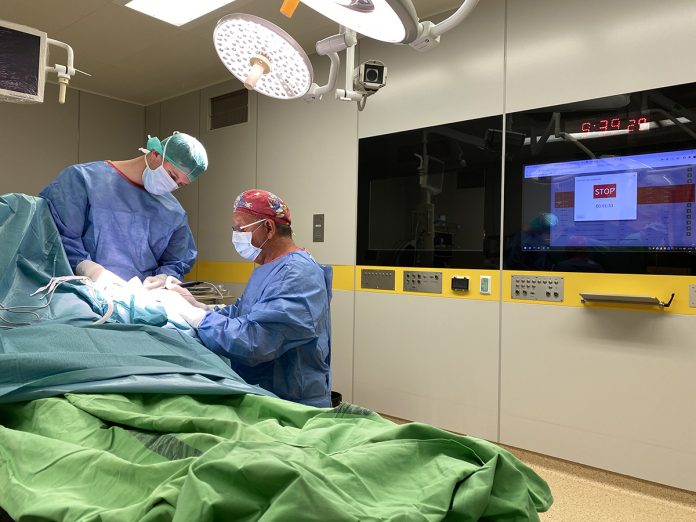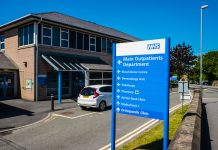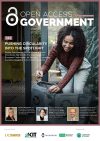The majority of businesses supplying products and services into the NHS through surgical pathways cannot have failed to be aware of the declared intent by the NHS to decarbonise the health system
To provide some impetus to this ambition, the Small Business Research Initiative (SBRI), sponsored by the NHS, launched a national competition last summer seeking solutions from innovators, with the ambition to develop technologies focused on decarbonisation of the surgical pathway. This being a well-known, (at least anecdotally), generator of significant and unnecessary waste.
TCC-CASEMIX Limited was one of the ten award winners of that competition for our PredictOR© proposition. It is focused on the unmet need, which is to transform patient consent, and in doing so provide total visibility concerning the potential carbon impacts of a decision to either undergo surgery or alternatively choose a non-invasive therapeutic intervention.
This need may seem to some readers to be somewhat irrelevant when they have been suffering for years through the pandemic, awaiting surgery. From the many that would have consented to surgery, there would be a significant proportion of them who may have lamented that decision. Indeed, we understand that in a survey undertaken by one NHS trust asking patients about how they felt about their surgery 12 months later on, 37% of respondents replied that they regretted the decision, because they were wholly unprepared for the consequences of the surgery. This is borne out by findings from research.1,2
Ongoing pain, disfigurement, anxiety, depression and poor mobility have been cited as significant reasons. It follows that better informed decision-making, could itself lead to decarbonisation. For example, some therapeutic interventions for back-pain have proven to be equally effective, when compared to surgery, 12 months later.
“Consider the impact on carbon emissions, Net Zero targets, and waiting lists, were 40% of all surgeries in specific specialties to result in non-surgical alternatives.”
Informed patient choice
The underlying need is to have much better-informed patients, supplied with comprehensive information, concerning the clinical choices available to them. Being served with a pamphlet, as is the current modus operandi of the National Institute of Clinical Excellence, is never going to be sufficient in this regard. One only has to read the report of the Cumberlege Committee, First Do No Harm3, to understand that there is a substantial body of patients that have suffered hugely because they were either misinformed or never informed. But what does better-informed mean in reality?
- It means understanding the opportunities for non-surgical interventions, where there is a body of evidence approved by NICE that demonstrates the efficacy of the alternatives for certain patient cohorts.
- It means understanding the measured patient reported outcomes for the surgery being recommended. The body of knowledge is in this area, is highly diffuse, and largely inaccessible to most patients. Dame Cumberlege advocated that it shouldn’t be, but two years after her report was first published, the situation has not changed. Change in the NHS is like that of a glacier she lamented.
- It means understanding the risk of each of the options available to the patient. To manage risk effectively, pertinent information and data is required. The significant unmet need today is that many surgeons and anaesthetists simply do not have access to a sufficient body of information to help inform those risks. Likewise, patients certainly do not.
This varies considerably amongst different surgical specialities. If we are to take decarbonisation of the surgical pathway seriously, then it must be recognised that neither do the professional teams have the data required to inform the patient concerning the risk of the planned procedure to the environment. This is another unmet need delivered by PredictOR©.
A medical device information system
As a direct response to the Independent Medicines and Medical Devices Safety Review (IMMDS Review) by which the Dame Cumberlege review is more formally known, TCC-CASEMIX Ltd has also designed and developed a medical device information system. The review advocated routine data acquisition in surgery. It advocated complete transparency of medical device performance data, and most notably it advocated transparency of medical device failures. But where does medical device performance data currently exist? It is out with the manufacturers. Consequently, our strategy is to engage medical device manufacturers in collaborating with us to address these unmet needs.
“TCC-CASEMIX® delivers to all of these needs because it provides total traceability of medical device performance used in every surgical procedure.”
TCC-CASEMIX® offers clinicians, surgical service providers, and importantly it offers patients too, the total democratisation (and thus visibility) of medical device performance data. Perhaps it can now be appreciated, how PredictOR© fits into this mould. It does so, because embodied carbon performance stored in the medical device information system, is simply another aspect of the functional performance of medical devices with which to inform patient choice.
NetZero for surgical pathways and services providers
PredictOR© thus enables the assimilation of the aggregated carbon in all the resources used to deliver the care to the patient on the surgical pathway. It is not difficult to conceive how all of the accumulated theatre lists, comprising all of the completed surgeries, will then present a picture of the aggregated embodied carbon and operational carbon emissions of the surgical services provider (an NHS trust for example).
It achieves this visibility through another major innovation, one that we refer to as an Open Registry Infrastructure (ORI). It is a unique means to enable patients and surgeons alike to query medical device performance from across Europe. It is a means for patients to become much better informed. Through PredictOR©, NHS Trusts will have access to all of the data required to make new operational policy decisions in the drive towards their surgical carbon reduction targets.
This capability now becomes the basis of ‘bottom-up’ performance reporting challenging ‘top-down’ system wide assumptions from our health system leadership. The dawn of a new era of democratisation of surgical performance data is upon us.
- See also AMA J Ethics. 2020;22(5):E352-357. doi: 10.1001/amajethics.2020.352.
- Surgery. 2017 Apr;161(4):1058-1066. doi: 10.1016/ j.surg.2016.10.028. Epub 2016 Dec 16. PMID: 27993362.
- https://www.gov.uk/government/publications/independent-medicines-and-medical-devices-safety-review-report
Please note: This is a commercial profile
© 2019. This work is licensed under CC-BY-NC-ND.











